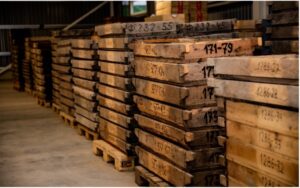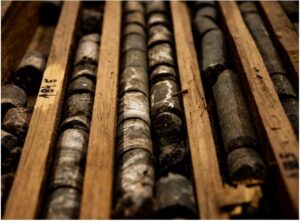07 Sep The Geological Survey of Estonia Looks for Critical Minerals
It’s not always the case that you need to drill new core to answer new questions. A lot of the time, answers can be found in existing core samples, you just need to unlock the information.
Core scanning technology has evolved dramatically over the decades, and so has the research in the geoscience space. There’s much more that can be learnt if we apply these new methods to our existing resources. Revisiting legacy drill cores gives you a great opportunity to not only expand upon the original geological data, but also to interpret the data in a whole new way. This is certainly true for our customers, The Geological Survey of Estonia (EGT) who have drawn up a plan to search for mineral resources in the crystalline basement. One essential part of the whole project is to re-investigate preserved crystalline rock drill cores from the national core archive. These legacy drill cores were drilled, investigated, then archived more than 30 years ago, but the focus was different. Before, technology metals were of less interest, however since the green transition the need for such materials has heightened immensely. Now, the range of elements of interest has increased, and so the core archive has become a valuable source of geological information once again.

Legacy drill cores to be logged
“Having more than 2000 trays of crystalline rock drill cores in the archive, it is irrational to start the project with a sampling program straight away. Hence, the Geotek MSCL-XYZ core workstation is used to log the core and identify intervals related to possible mineralisation,” explains Siim Nirgi, Senior Geologist at EGT. EGT’s MSCL-XYZ is equipped with geochemical, mineralogical, and magnetic susceptibility sensors, as well as a high resolution linescan camera for core imaging. With an average interval of 10 cm, the data is being collected from the rounded core surface, together with the high-resolution core photography.

Legacy drill cores to be logged
During the first half of the year, around 1500 m of drill core has already been logged from the planned 3000 m. Once logging is complete, the team will move on to sampling and laboratory whole-rock ICPMS and scanning electron microscopy analysis.
Working with old core material is always challenging. Some drill cores have been repacked into new trays producing depth uncertainties, while others may suffer from secondary weathering because of fifty years of mixed storage conditions. All of these challenges need addressing before logging can start. Challenges aside, Siim reports “the first results are encouraging, showing that historical sampling programmes not only missed some important mineralisation features, but also some changes in lithologies were not identified with the naked eye”.

Geotek MSCL-XYZ Core Workstation in the survey’s core storage facility
For future drillholes, it will become routine practice to run the new core through the MSCL-XYZ for automated logging before geological logging. Siim shares that the “big dataset helps to define lithological boundaries and shows the heterogeneity of rock units,” which aid the geologists in their interpretation and sub-sampling decisions.
With 1500 m of core already scanned, the search for the mineral resources is well underway, bringing Estonia a step closer to understanding the economic potential of their raw materials. Once all the data within this project is acquired, it will be made available for everyone to use. It’s brilliant to see that even after 30 years, historic drill core continues to provide invaluable insights into the sub-surface, and can contribute to new research surrounding the green transition.
If you’d like to learn more about the MSCL-XYZ system, or how you can benefit once more from you legacy core, please email sales@geotek.co.uk.

